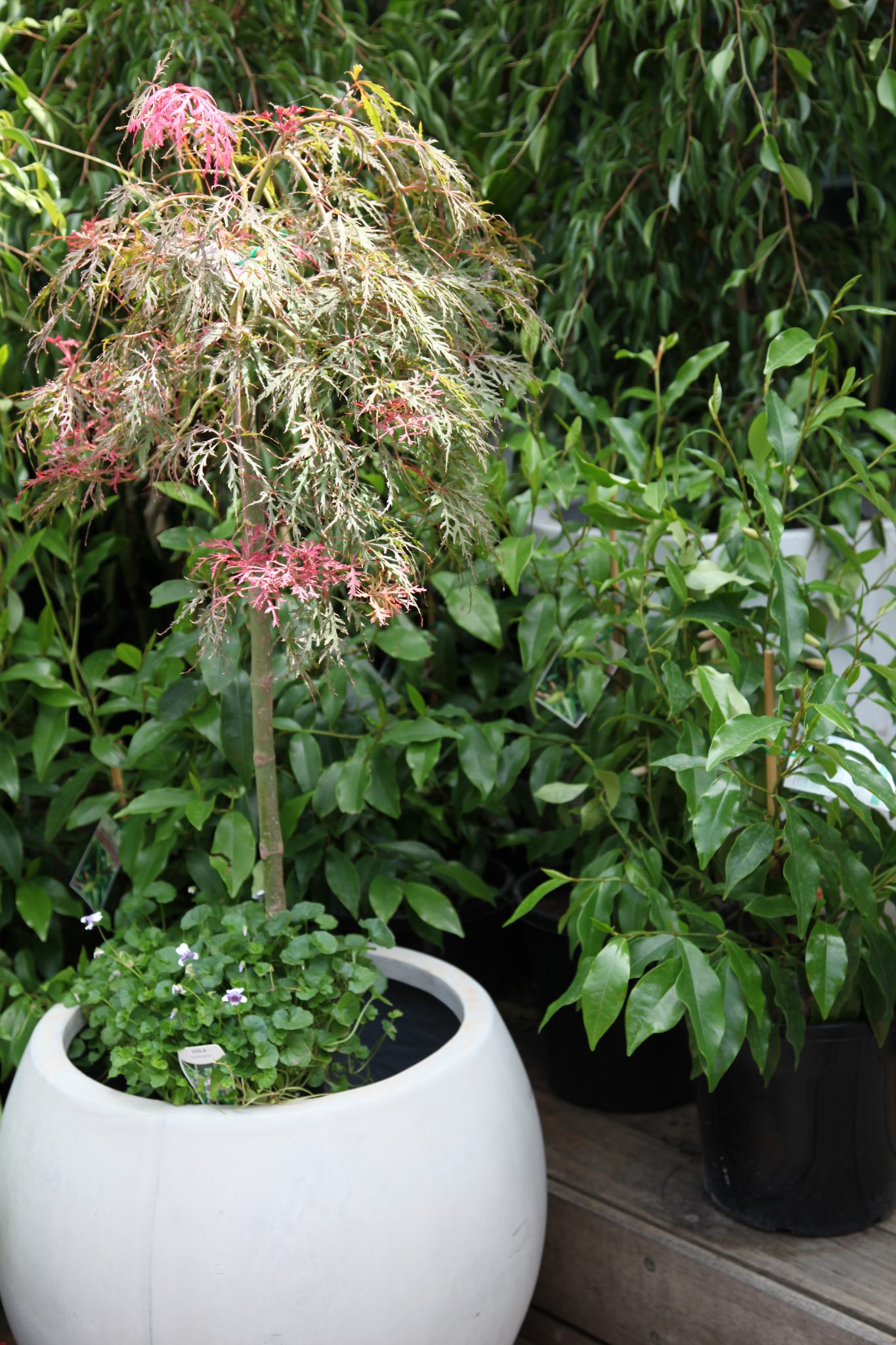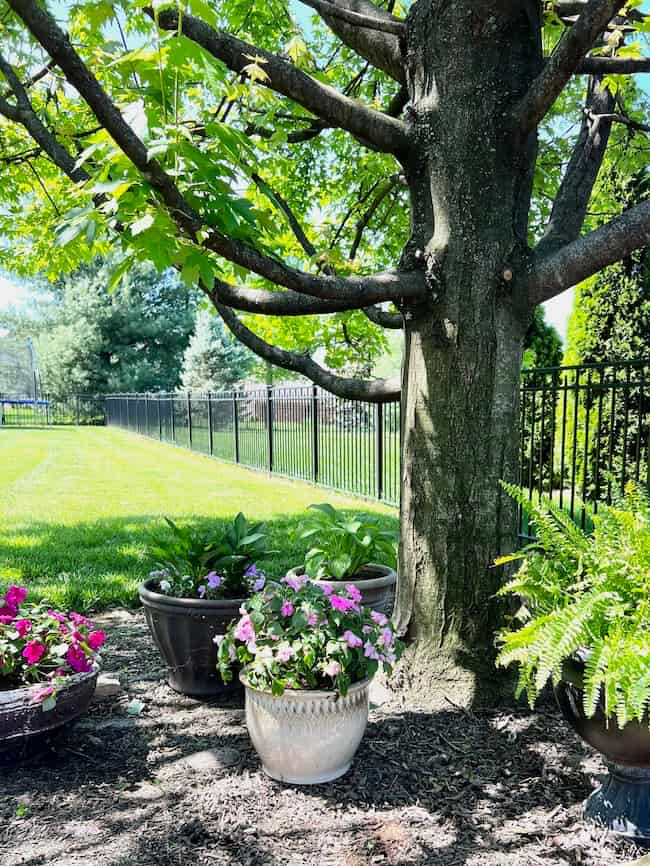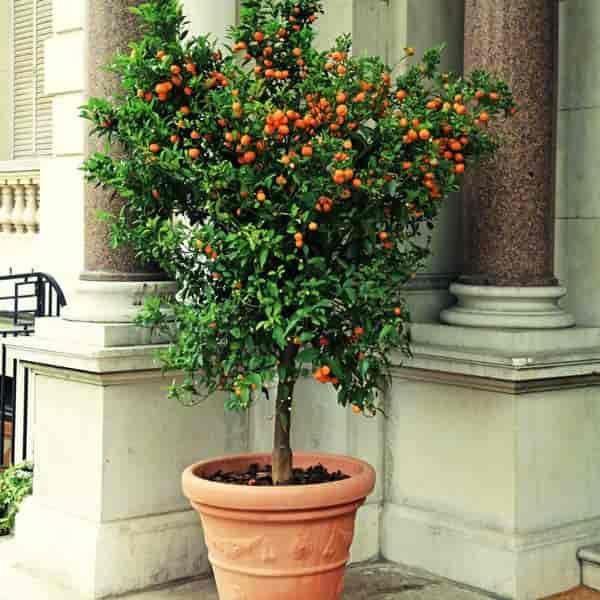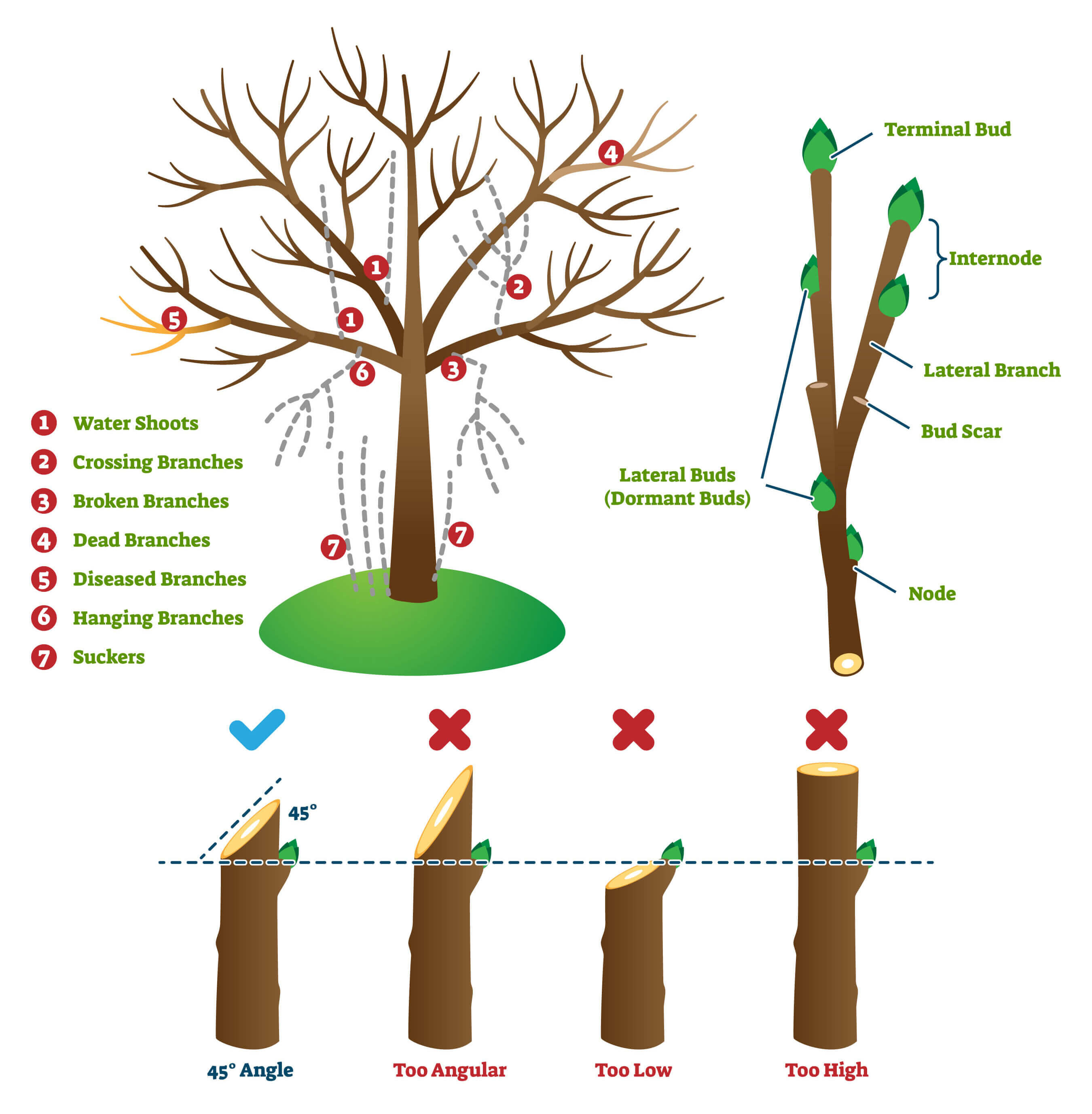Why Container Gardening is a Great Option for Tree Enthusiasts
Container gardening has become an increasingly popular option for tree enthusiasts, offering a unique combination of flexibility, space-saving, and year-round growth. For those who want to grow trees but have limited space, container gardening can be a great solution. By growing trees in pots, individuals can enjoy the benefits of tree cultivation without the need for a large garden or yard.
One of the primary advantages of container gardening is its flexibility. Trees can be grown in pots of various sizes, from small planters to large containers, allowing individuals to choose the size that best suits their space. Additionally, container gardens can be easily moved or rearranged, making it simple to change the layout or location of the trees as needed.
Container gardening also offers the benefit of year-round growth. By using pots, individuals can control the soil quality and temperature, allowing trees to thrive in conditions that might not be suitable for in-ground cultivation. This means that trees can be grown in areas with poor soil or extreme temperatures, making it possible to enjoy a lush and vibrant garden even in challenging environments.
Furthermore, container gardening allows individuals to grow a wide range of tree species, including those that might not be suitable for in-ground cultivation. For example, trees that require well-draining soil or full sun can thrive in containers, even in areas with poor soil or limited sunlight. This makes it possible to grow a diverse range of trees, including species that might not be native to the local area.
Overall, container gardening is a great option for tree enthusiasts who want to enjoy the benefits of tree cultivation without the need for a large garden or yard. By offering flexibility, space-saving, and year-round growth, container gardening makes it possible to grow a wide range of tree species, even in challenging environments. Whether you’re a seasoned gardener or just starting out, container gardening is definitely worth considering.
Some popular trees that can grow in a pot include dwarf citrus, Japanese maple, and dwarf Washington nectarine. These trees are well-suited for container gardening due to their compact root systems and slow growth rates. By choosing the right tree species and following proper care and maintenance techniques, individuals can enjoy a thriving and beautiful container garden.
Top Characteristics to Look for in Trees that Thrive in Pots
When selecting trees that can grow in a pot, it’s essential to look for certain characteristics that will enable them to thrive in containers. Trees with compact root systems, slow growth rates, and adaptability to changing conditions are ideal for container gardening.
Compact root systems are crucial for trees growing in pots, as they prevent the roots from becoming root-bound and reduce the need for frequent repotting. Trees with compact root systems, such as dwarf citrus and Japanese maple, are well-suited for container gardening.
Slow growth rates are also beneficial for trees growing in pots, as they reduce the need for frequent pruning and maintenance. Trees with slow growth rates, such as dwarf Washington nectarine and bonsai trees, are ideal for container gardening.
Adaptability to changing conditions is also essential for trees growing in pots. Trees that can adapt to changing temperatures, humidity, and light conditions are more likely to thrive in containers. Trees such as olive and fig trees are well-suited for container gardening due to their adaptability.
In addition to these characteristics, trees that can grow in a pot should also be disease-resistant and pest-tolerant. Trees that are susceptible to diseases and pests can quickly become stressed and decline in health, making them less suitable for container gardening.
By selecting trees with these characteristics, gardeners can create a thriving container garden that requires minimal maintenance and care. Whether you’re a seasoned gardener or just starting out, choosing the right tree for your container garden is crucial for success.
Some popular trees that can grow in a pot and possess these characteristics include:
- Dwarf citrus (compact root system, slow growth rate)
- Japanese maple (compact root system, slow growth rate)
- Dwarf Washington nectarine (slow growth rate, adaptability to changing conditions)
- Olive tree (adaptability to changing conditions, disease-resistant)
- Fig tree (adaptability to changing conditions, pest-tolerant)
By considering these characteristics and selecting the right tree for your container garden, you can create a beautiful and thriving garden that brings joy and beauty to your outdoor space.
How to Select the Perfect Tree for Your Container Garden
Selecting the right tree for your container garden can be a daunting task, especially with the numerous options available. However, by considering a few key factors, you can choose a tree that will thrive in its container and provide you with years of enjoyment.
One of the most important factors to consider when selecting a tree for your container garden is the climate. Different tree species have different climate requirements, so it’s essential to choose a tree that is well-suited to your local climate. For example, if you live in a hot and dry climate, you may want to choose a tree that is drought-tolerant, such as a dwarf citrus or olive tree.
Soil type is another crucial factor to consider when selecting a tree for your container garden. Different tree species have different soil requirements, so it’s essential to choose a tree that is well-suited to the soil type in your container. For example, if you have a container with well-draining soil, you may want to choose a tree that prefers well-draining soil, such as a Japanese maple or dwarf Washington nectarine.
Desired level of maintenance is also an important factor to consider when selecting a tree for your container garden. Some tree species require more maintenance than others, so it’s essential to choose a tree that fits your maintenance schedule. For example, if you have a busy schedule and don’t have a lot of time to maintain your tree, you may want to choose a low-maintenance tree, such as a dwarf citrus or fig tree.
Another factor to consider when selecting a tree for your container garden is the size of the container. Different tree species have different size requirements, so it’s essential to choose a tree that is well-suited to the size of your container. For example, if you have a small container, you may want to choose a dwarf or compact tree species, such as a dwarf Washington nectarine or Japanese maple.
Finally, consider the purpose of your container garden. Are you looking for a tree that will provide shade, or one that will produce fruit? Different tree species have different purposes, so it’s essential to choose a tree that fits your needs.
By considering these factors, you can choose a tree that will thrive in its container and provide you with years of enjoyment. Some popular trees that can grow in a pot and are well-suited to container gardens include:
- Dwarf citrus (drought-tolerant, low-maintenance)
- Japanese maple (well-suited to well-draining soil, compact size)
- Dwarf Washington nectarine (compact size, produces fruit)
- Olive tree (drought-tolerant, low-maintenance)
- Fig tree (low-maintenance, produces fruit)
By selecting the right tree for your container garden, you can create a beautiful and thriving garden that will provide you with years of enjoyment.
5 Stunning Tree Species that Can Grow in Pots
When it comes to growing trees in pots, there are many beautiful species to choose from. Here are five stunning tree species that can thrive in containers, including the Dwarf Washington Nectarine, the Japanese Maple, and the Dwarf Citrus.
Dwarf Washington Nectarine
The Dwarf Washington Nectarine is a popular choice for container gardening due to its compact size and delicious fruit. This tree grows to be around 6-8 feet tall and produces sweet, juicy nectarines in the summer. It prefers well-draining soil and full sun to partial shade.

Japanese Maple
The Japanese Maple is a stunning tree species that can grow in pots, known for its vibrant red foliage and compact size. This tree grows to be around 6-10 feet tall and prefers well-draining soil and partial shade to full sun.

Dwarf Citrus
The Dwarf Citrus is a popular choice for container gardening due to its compact size and delicious fruit. This tree grows to be around 6-10 feet tall and produces sweet, juicy citrus fruits in the summer. It prefers well-draining soil and full sun to partial shade.

Dwarf Apple
The Dwarf Apple is a stunning tree species that can grow in pots, known for its delicious fruit and compact size. This tree grows to be around 6-10 feet tall and produces sweet, juicy apples in the fall. It prefers well-draining soil and full sun to partial shade.

Olive Tree
The Olive Tree is a popular choice for container gardening due to its compact size and delicious fruit. This tree grows to be around 6-10 feet tall and produces sweet, juicy olives in the fall. It prefers well-draining soil and full sun to partial shade.

These five tree species are just a few examples of the many beautiful trees that can grow in pots. By choosing the right tree for your container garden, you can enjoy the benefits of tree cultivation without the need for a large garden or yard.
Expert Tips for Planting and Caring for Your Potted Tree
Planting and caring for a potted tree requires attention to detail and a commitment to providing the right conditions for optimal growth. Here are some expert tips to help you get started:
Soil Selection
When selecting a potting soil for your tree, look for a well-draining mix that is specifically designed for containers. Avoid using garden soil from your yard, as it can compact and prevent proper drainage.
Watering
Watering is one of the most critical aspects of caring for a potted tree. Check the soil daily, and water only when the top inch of soil feels dry to the touch. Avoid overwatering, which can lead to root rot and other problems.
Fertilization
Fertilize your potted tree regularly to provide essential nutrients for growth. Use a balanced, water-soluble fertilizer, and follow the instructions on the label for application rates.
Pruning
Pruning is an essential part of caring for a potted tree. Prune your tree regularly to maintain its shape, promote healthy growth, and encourage fruiting. Remove any dead or diseased branches, and cut back overgrown branches to maintain a balanced shape.
Pest and Disease Control
Regularly inspect your potted tree for signs of pests or diseases, such as aphids, whiteflies, or powdery mildew. Use organic or chemical controls as needed to prevent infestations and infections.
Repotting
Repot your potted tree every 2-3 years to provide fresh soil and a larger pot if necessary. Choose a pot that is only slightly larger than the previous one, and use a well-draining potting mix to prevent waterlogged soil.
By following these expert tips, you can provide your potted tree with the care it needs to thrive. Remember to be patient and observant, and don’t hesitate to seek advice from a gardening expert if you have any questions or concerns.
Some popular trees that can grow in a pot and benefit from these care tips include:
- Dwarf citrus (compact root system, slow growth rate)
- Japanese maple (compact root system, slow growth rate)
- Dwarf Washington nectarine (compact root system, slow growth rate)
- Olive tree (drought-tolerant, low-maintenance)
- Fig tree (drought-tolerant, low-maintenance)
By providing the right care and attention, you can enjoy the benefits of growing trees in pots, including flexibility, space-saving, and year-round growth.
Common Challenges and Solutions for Growing Trees in Pots
While growing trees in pots can be a rewarding experience, it’s not without its challenges. Here are some common problems that can arise when growing trees in pots, along with some solutions and troubleshooting tips to help you overcome them:
Root Bound
One of the most common challenges when growing trees in pots is root bound. This occurs when the roots of the tree become constricted by the pot, preventing the tree from absorbing the nutrients it needs to grow. To prevent root bound, make sure to choose a pot that is large enough to accommodate the tree’s root system, and consider repotting the tree every 2-3 years to provide fresh soil and a larger pot if necessary.
Pests
Pests can be a major problem when growing trees in pots. Common pests that can affect trees in pots include aphids, whiteflies, and spider mites. To prevent pest infestations, make sure to inspect your tree regularly, and use organic or chemical controls as needed to prevent infestations and infections.
Diseases
Diseases can also be a major problem when growing trees in pots. Common diseases that can affect trees in pots include root rot, leaf spot, and powdery mildew. To prevent disease, make sure to provide good air circulation around the tree, and avoid overwatering, which can lead to root rot and other problems.
Watering Issues
Watering can be a challenge when growing trees in pots. Overwatering can lead to root rot and other problems, while underwatering can cause the tree to become stressed and decline. To prevent watering issues, make sure to check the soil daily, and water only when the top inch of soil feels dry to the touch.
Temperature Extremes
Temperature extremes can be a challenge when growing trees in pots. Trees in pots can be more susceptible to temperature extremes than trees in the ground, so make sure to provide protection from extreme temperatures, such as bringing the tree indoors during the winter or providing shade during the summer.
By being aware of these common challenges and taking steps to prevent them, you can help ensure the health and longevity of your potted tree. Some popular trees that can grow in a pot and benefit from these solutions include:
- Dwarf citrus (compact root system, slow growth rate)
- Japanese maple (compact root system, slow growth rate)
- Dwarf Washington nectarine (compact root system, slow growth rate)
- Olive tree (drought-tolerant, low-maintenance)
- Fig tree (drought-tolerant, low-maintenance)
By following these tips and solutions, you can help your potted tree thrive and enjoy the benefits of growing trees in pots, including flexibility, space-saving, and year-round growth.
How to Prune and Train Your Potted Tree for Optimal Growth
Pruning and training your potted tree is essential for maintaining its shape, promoting healthy growth, and encouraging fruiting. Here are some step-by-step guidelines on how to prune and train your tree for optimal results:
Pruning
Pruning is the process of removing dead, diseased, or damaged branches from your tree. This helps to maintain the tree’s shape, promote healthy growth, and encourage fruiting. To prune your tree, follow these steps:
- Inspect your tree regularly to identify any dead, diseased, or damaged branches.
- Use a pair of sharp, clean pruning shears to remove the identified branches.
- Make clean cuts just above a growth node, at a 45-degree angle.
- Remove any weak or spindly growth to promote a strong, balanced shape.
Training
Training your tree involves shaping it to maintain a desired shape or size. This can be done through pruning, staking, or cabling. To train your tree, follow these steps:
- Determine the desired shape or size of your tree.
- Use pruning shears to remove any branches that are outside of the desired shape or size.
- Use stakes or cables to support the tree and maintain its shape.
- Monitor the tree’s growth and adjust the stakes or cables as needed.
Benefits of Pruning and Training
Pruning and training your potted tree can have numerous benefits, including:
- Promoting healthy growth and fruiting.
- Maintaining a strong, balanced shape.
- Encouraging a desired shape or size.
- Reducing the risk of disease and pests.
Some popular trees that can grow in a pot and benefit from pruning and training include:
- Dwarf citrus (compact root system, slow growth rate)
- Japanese maple (compact root system, slow growth rate)
- Dwarf Washington nectarine (compact root system, slow growth rate)
- Olive tree (drought-tolerant, low-maintenance)
- Fig tree (drought-tolerant, low-maintenance)
By following these step-by-step guidelines, you can prune and train your potted tree for optimal growth and enjoy the benefits of growing trees in pots, including flexibility, space-saving, and year-round growth.
Creating a Thriving Container Garden with Multiple Trees
Creating a container garden with multiple trees can be a beautiful and rewarding experience. By combining different tree species, you can create a stunning display of color, texture, and shape that will add visual interest to your outdoor space. Here are some tips on how to create a thriving container garden with multiple trees:
Choose Complementary Trees
When selecting trees for your container garden, choose species that complement each other in terms of size, shape, and color. Consider the mature size of each tree and leave enough space between them for proper growth and air circulation.
Consider the Climate and Soil
Make sure to choose trees that are suitable for your climate and soil type. Consider the amount of sunlight and water each tree requires and choose species that have similar needs.
Use a Large Enough Container
Use a large enough container to accommodate the root system of each tree. A minimum size of 14-16 inches deep and 2-3 feet wide is recommended.
Provide Proper Care
Provide proper care for your trees, including regular watering, fertilization, and pruning. Make sure to water each tree thoroughly, but avoid overwatering, which can lead to root rot and other problems.
Monitor and Adjust
Monitor your trees regularly and adjust their care as needed. Keep an eye out for signs of stress, disease, or pests, and take action promptly to prevent problems from spreading.
Some popular tree species that can thrive in a container garden with multiple trees include:
- Dwarf citrus (compact root system, slow growth rate)
- Japanese maple (compact root system, slow growth rate)
- Dwarf Washington nectarine (compact root system, slow growth rate)
- Olive tree (drought-tolerant, low-maintenance)
- Fig tree (drought-tolerant, low-maintenance)
By following these tips and choosing the right trees for your container garden, you can create a stunning and thriving display of multiple trees that will add beauty and interest to your outdoor space.
Remember, the key to creating a successful container garden with multiple trees is to choose species that complement each other and provide proper care and attention. With a little planning and maintenance, you can enjoy the benefits of growing trees in pots, including flexibility, space-saving, and year-round growth.








